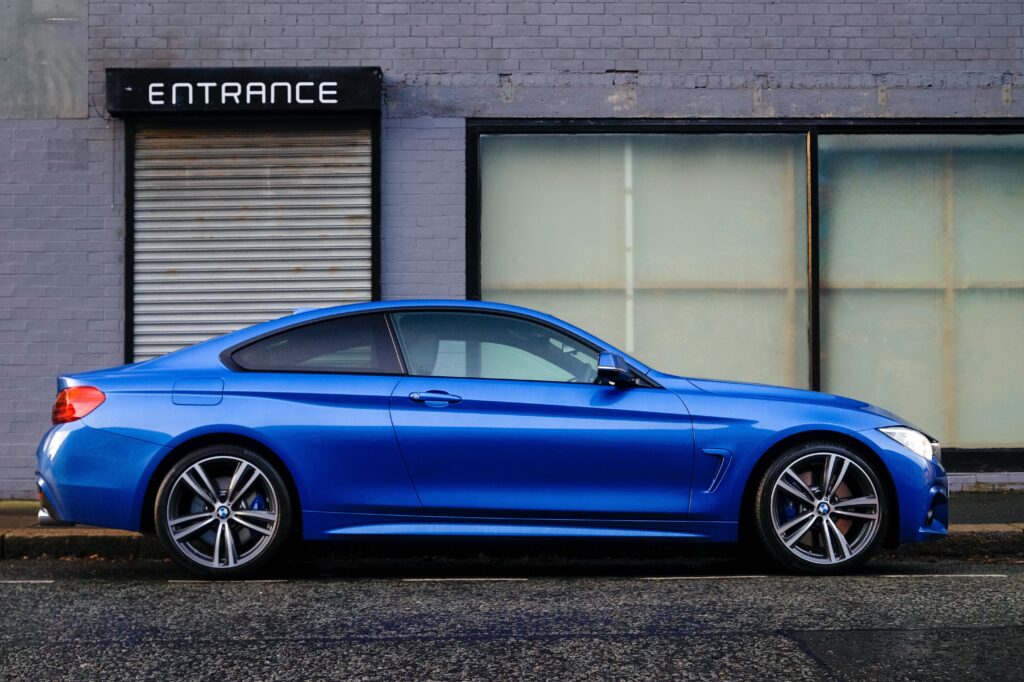In the dynamic gaming world, Non-Player Character cars, commonly known as NPC cars, play a pivotal role in shaping immersive virtual environments. These AI-controlled vehicles have evolved significantly since their inception, moving beyond mere traffic simulation to becoming integral components of interactive and engaging gaming experiences. From the early days of simple traffic patterns to the marvels of modern artificial intelligence, NPC cars have undergone a remarkable transformation, enriching gameplay and enhancing the realism of virtual worlds. This article will explore the evolution of NPC cars, tracing their journey from basic traffic elements to the complex and interactive entities that captivate players today.
Contents
NPC Cars: Building Realistic Virtual Worlds
In the early days of gaming, NPC cars emerged as a key element in creating realistic and vibrant virtual worlds. Initially, their primary role was to simulate traffic in open-world games, contributing to the immersive nature of game environments. These AI-controlled vehicles traversed the virtual streets, adhering to predefined paths, and added a sense of life and activity to the game world.
The importance of NPC cars cannot be overstated when crafting a believable and authentic gaming experience. As players explore vast open-world landscapes, bustling traffic with AI-driven cars enhances the feeling of being in a living, breathing city or environment. NPC cars bring dynamism and unpredictability, making the game world feel more alive and engaging.

Numerous games have effectively utilized NPC cars to bolster traffic flow and create a convincing ambiance. One prime example is “Grand Theft Auto V,” where NPC cars populate the sprawling city of Los Santos, contributing to its authenticity and making it feel like a bustling metropolis. Similarly, the “Watch Dogs” series incorporates NPC cars to enhance the feeling of a living city controlled by AI-driven inhabitants. These games illustrate how NPC cars, though seemingly mundane, are crucial for building immersive virtual worlds that captivate players and offer endless exploration opportunities.
Advancements in AI and NPC Behavior
The rapid progress in artificial intelligence (AI) has revolutionized NPC car behavior in gaming, elevating them from simple traffic elements to dynamic and interactive entities. With increasingly sophisticated AI algorithms, NPC cars can exhibit more human-like traits and respond to the player’s actions realistically and engagingly.
AI-driven NPCs have become remarkably dynamic, adapting their behavior based on the player’s interactions and decisions. In open-world games, NPC cars may respond to traffic signals, change lanes intelligently, and even avoid collisions, mimicking the behavior of real drivers. Moreover, they react to the player’s presence, making way for the player’s vehicle or showing signs of frustration if blocked or impeded.
These advancements in AI have led to more immersive and captivating gameplay experiences. NPC cars are no longer mere background elements but essential components contributing to the game’s narrative and overall atmosphere. As players traverse the virtual world, they interact with AI-driven vehicles, making the environment feel more alive and dynamic.
As AI technology continues to evolve, the possibilities for NPC car behavior will expand further, pushing the boundaries of realism and player immersion in gaming worlds. These advancements ensure that NPC cars remain integral to creating dynamic, lifelike virtual environments that players can explore and enjoy.
NPC Cars as Quest-Givers and Storytelling Tools
The evolution of NPC cars in gaming has transcended their initial role as mere traffic elements, transforming them into integral components of quests and missions and essential storytelling tools. As game developers seek to create more immersive and captivating experiences, NPC cars have found new purposes beyond traffic simulation.
In certain games, NPC cars act as quest-givers, interacting with the player and offering missions or tasks that drive the narrative forward. These quests can range from simple courier missions to more complex storylines, where the player’s interactions with NPC cars become critical to unraveling the plot.
Moreover, some games have ingeniously woven NPC cars into the fabric of the storyline, making them vehicles essential to the game’s overarching narrative. Players may embark on quests that involve escorting important characters in NPC cars, protecting valuable cargo, or participating in high-stakes vehicular chases. The presence of interactive NPC cars adds a layer of excitement and immersion to the gameplay experience.
The impact of interactive NPC cars on the overall narrative and player engagement is profound. Game developers create a more relatable and dynamic world for players to explore by introducing NPCs with their personalities and motivations. Engaging with NPC cars personally, through dialogue or scripted events, deepens the emotional connection between players and the game’s storyline.
As players interact with NPC cars, their choices can shape the outcome of quests or missions, leading to branching storylines and multiple endings. This level of agency empowers players to craft their unique experiences within the game world, enhancing replayability and player satisfaction.
Games such as “The Witcher 3: Wild Hunt” exemplify the use of NPC cars as quest-givers, each with their quests that contribute to the broader narrative. Similarly, in “Grand Theft Auto V,” NPC cars are often central to the game’s missions, either as getaway vehicles or tools for heists, emphasizing their role in driving the storyline.
Racing Games: NPC Cars as Challenging Opponents
In the thrilling realm of racing games, NPC cars play a crucial role as formidable opponents for the player. These AI-controlled vehicles intensify the racing experience, providing challenges and excitement that push players to their limits.
AI-controlled cars in racing games are designed to adapt to the player’s skill level, creating dynamic and competitive gameplay. The AI analyzes the player’s driving abilities and adjusts the behavior of NPC cars accordingly. Novice players may face opponents that are more forgiving, allowing them to learn the mechanics of the game, while seasoned players encounter skillful AI drivers that provide a true test of their racing prowess.
This adaptive AI in NPC cars ensures that races remain thrilling and engaging, regardless of the player’s experience. As players improve their skills, AI becomes more challenging, presenting a constant source of competition and motivation for players to strive for excellence.
Several popular racing games implement NPC cars effectively to provide an exhilarating experience. Titles like “Gran Turismo” and “Forza Motorsport” feature advanced AI systems that simulate real-world racing behaviors, making races competitive and authentic. Additionally, the “Mario Kart” series showcases NPC cars with quirky and dynamic AI, offering casual and competitive gameplay for players of all ages.
In these racing games, NPC cars are not just faceless entities; they become integral to the heart-pounding action, mimicking the strategies of human opponents and adapting to the player’s performance. This level of AI-driven realism ensures that racing games remain challenging and enjoyable, providing a thrilling experience for players seeking high-speed thrills on the virtual track.
Immersion and Realism: NPC Cars in Modern Gaming
Pursuing immersion and realism in modern gaming has seen NPC cars evolve into pivotal elements that breathe life into virtual worlds. Advanced AI and realistic physics have played a vital role in enhancing the authenticity and believability of NPC cars, contributing to unforgettable gaming experiences.
With sophisticated AI algorithms, NPC cars now exhibit behavior that resembles real-life drivers. AI-controlled vehicles respond intelligently to traffic patterns, obey traffic rules, and adapt their actions based on the game’s environment. This level of AI-driven realism makes the virtual roads feel dynamic and vibrant, blurring the line between reality and the gaming experience.

AI’s ability to simulate traffic patterns and behaviors realistically elevates players’ immersion level. In bustling cities, players encounter NPCs navigating the streets like real drivers, making the game world feel alive and authentic. NPC cars react to the player’s presence, honking if obstructed or yielding the right of way, creating a sense of interaction and responsiveness that enhances the overall immersion.
Including NPC cars in modern gaming goes beyond mere decoration; they are essential components that contribute to the game’s ambiance and atmosphere. As players traverse the virtual landscape, they witness a living, breathing world bustling with activity, all thanks to the presence of interactive and intelligent NPC cars. This dynamic environment adds depth and realism to the game, fully immersing players in virtual reality.
Furthermore, NPC cars contribute to the player’s sense of agency and connection to the game world. AI-driven vehicles interacting with the player and other game elements make the experience feel personalized and responsive. Whether players are exploring vast open worlds or engaging in high-octane races, the presence of NPC cars contributes significantly to the overall immersion and sense of presence within the gaming environment.
Future of NPC Cars in Gaming
As technology advances rapidly, the future of NPC cars in gaming holds exciting possibilities, promising even more immersive and interactive experiences for players. Emerging technologies and trends are set to shape the development of NPC car behavior, paving the way for increasingly complex virtual worlds.
One of the key areas of development lies in artificial intelligence. As AI algorithms become more sophisticated, NPC cars display more realistic and human-like behaviors. They will adapt to changing environments, learn from player interactions, and respond dynamically to unexpected situations, further blurring the line between human players and AI-controlled entities.
Advancements in physics engines and rendering technologies will also contribute to the future of NPC cars. Realistic physics simulations will make driving and collisions lifelike, resulting in more convincing and intense gameplay experiences. Enhanced graphics capabilities will allow for greater visual detail and realism in the design of NPC cars, enriching the overall gaming environment.
Additionally, the rise of cloud computing and distributed processing will enable games to seamlessly handle larger and more complex virtual worlds. As a result, NPC cars can exist in vast, persistent game worlds continuously evolving based on player actions. This level of persistence and realism will create immersive, living game worlds where NPC cars contribute to the ever-changing narrative.
Conclusion
The evolution of NPC cars in gaming has been remarkable, transforming from basic traffic simulation elements to integral components of immersive and captivating virtual experiences. Through advancements in artificial intelligence (AI), these AI-driven vehicles have become more than mere background entities; they now possess dynamic and realistic behaviors that adapt to players’ actions, enhancing the overall gameplay.
The role of AI in shaping NPC car behavior cannot be understated. AI algorithms have enabled NPC cars to display human-like traits, creating interactive and engaging interactions with players. The adaptability of AI-controlled vehicles ensures that races and quests remain challenging and compelling, tailored to individual player skills and preferences.
In today’s gaming landscape, NPC cars play a vital role in crafting captivating virtual environments. From bustling cityscapes with realistic traffic patterns to thrilling racing circuits, these AI entities enrich the game world, making it feel vibrant and alive. As players traverse these dynamic landscapes, the presence of NPC cars contributes to a sense of immersion and realism, drawing players deeper into virtual reality.
NPC cars have become indispensable in fostering memorable gaming experiences. The interactions with AI-driven vehicles add depth to the narrative, create moments of suspense and excitement, and provide players with unique challenges. The personalized nature of NPC car behavior contributes to a sense of agency, empowering players to shape their gaming adventures.

As technology advances, the future of NPC cars in gaming holds endless possibilities. From improved AI algorithms to integrating emerging technologies like virtual and augmented reality, NPC cars will continue to evolve, enriching gaming experiences and cementing their position as essential elements of immersive virtual worlds.
Unleashing the Unforgettable: Dynamic Static Car Spectacle of 2023 – An Automotive Extravaganza
Why do people bend their license plates ? – 2023





